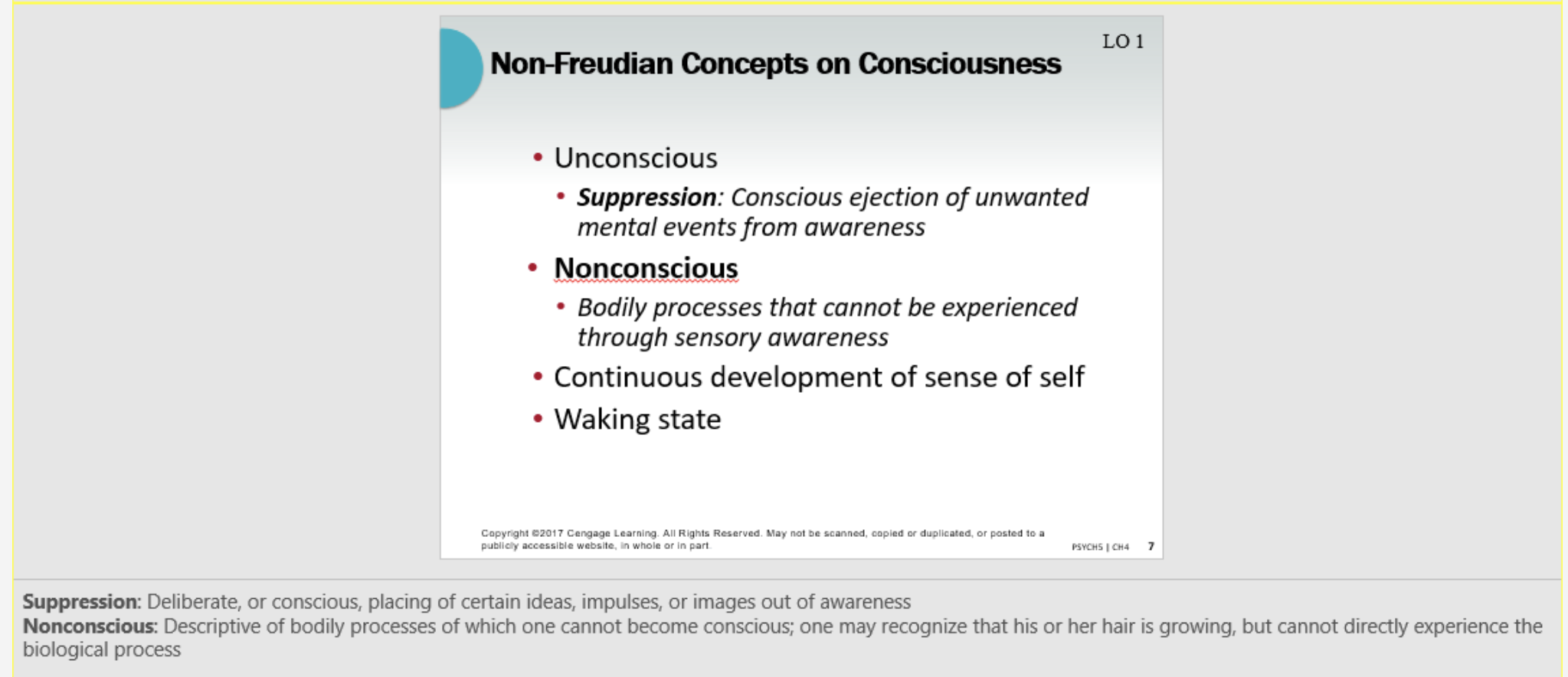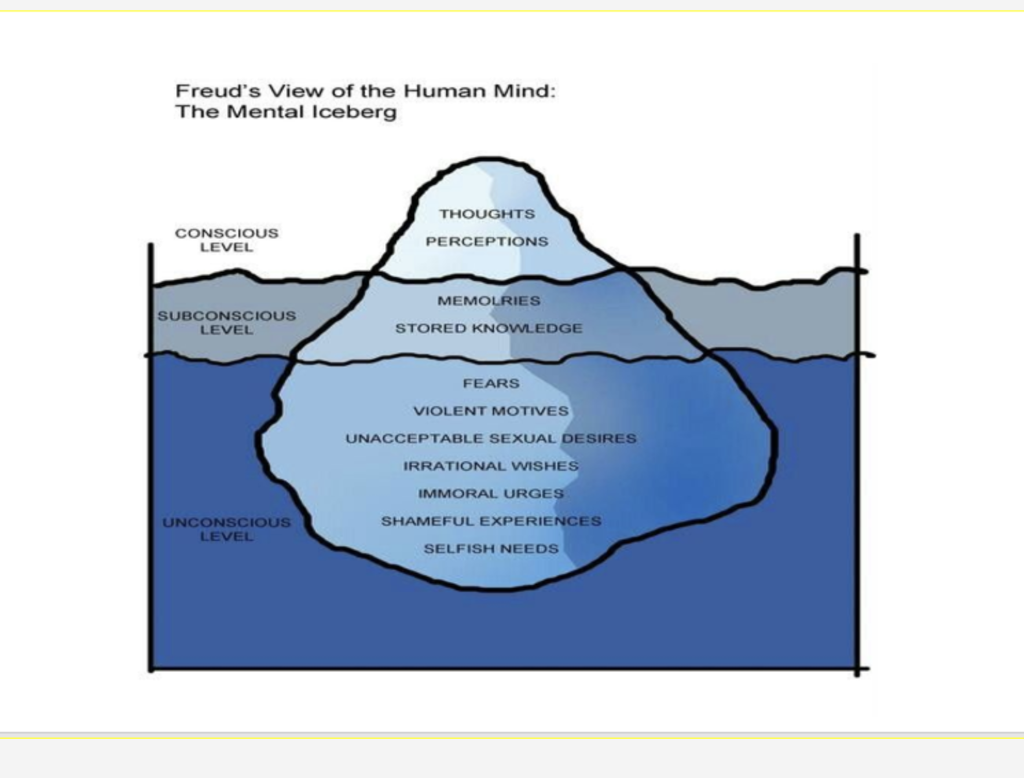Home /
Expert Answers /
Psychology /
review-freud-39-s-theory-on-unconscious-preconscious-and-conscious-post-a-summary-of-his-t-pa329
(Solved): Review Freud's theory on unconscious, preconscious, and conscious. Post a summary of his t ...
Review Freud's theory on unconscious, preconscious, and conscious. Post a summary of his theory and at each level an example. Include definitions of suppression and repression from his theory and give an example of when someone would suppress something and when one person might repress something--- be detailed.
Picture of Freud's Conscious Iceberg A Freud's Take on Consciousness LO 1 - Preconscious - Not currently in awareness, but readily available - Unconscious - Unavailable to awareness under most circumstances - Repression - Allows one to avoid feelings of anxiety, guilt, or shame Copynight e2017 Cengage Learning. All Rights Reserved. May not be scanned, oopied or duplicated, or posted to a publicly accessible website, in whole or in part. Preconscious: In psychodynamic theory, descriptive of material that is not in awareness but can be brought into awareness by focusing one's attention Unconscious: In psychodynamic theory, descriptive of ideas and feelings that are not available to awareness or without consciousness Repression: In psychodynamic theory, the automatic (unconscious) ejection of anxiety-evoking ideas, impulses, or images from awareness
Non-Freudian Concepts on Consciousness LO 1 - Unconscious - Suppression: Conscious ejection of unwanted mental events from awareness - Nonconscious - Bodily processes that cannot be experienced through sensory awareness - Continuous development of sense of self - Waking state Suppression: Deliberate, or conscious, placing of certain ideas, impulses, or images out of awareness Nonconscious: Descriptive of bodily processes of which one cannot become conscious; one may recognize that his or her hair is growing, but cannot directly experience the biological process
Freud's View of the Human Mind: The Mental Iceberg


